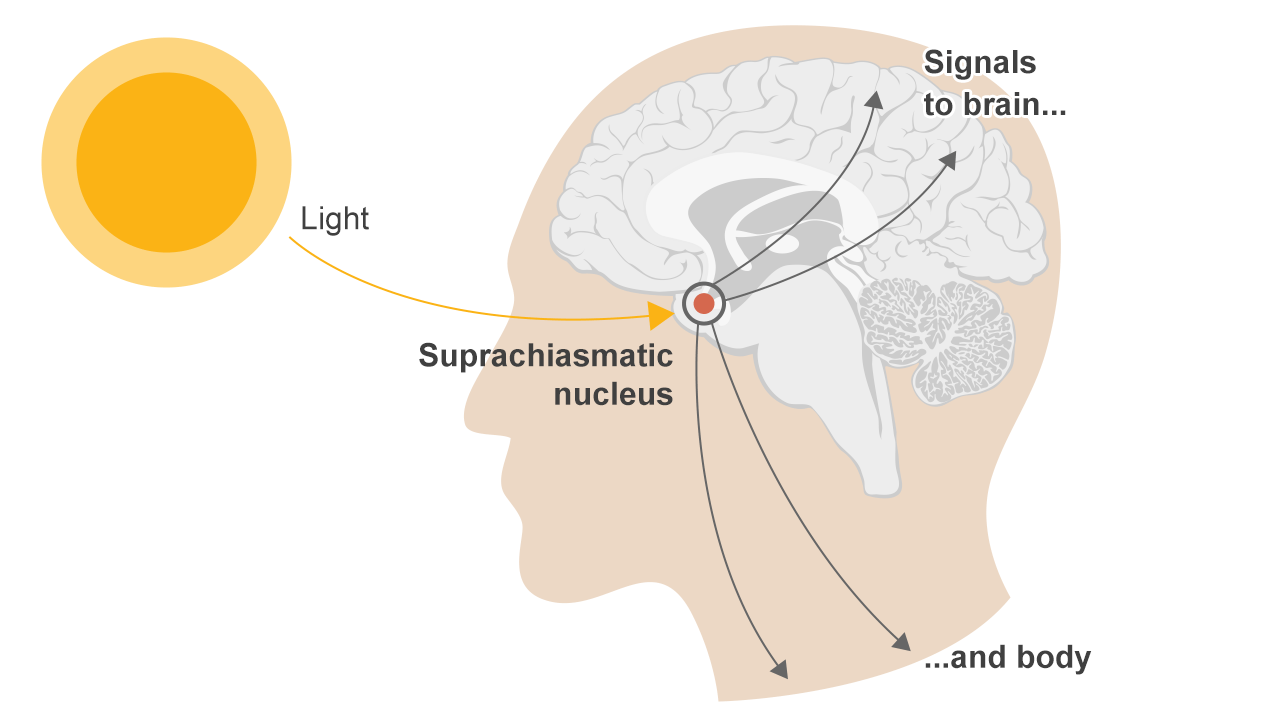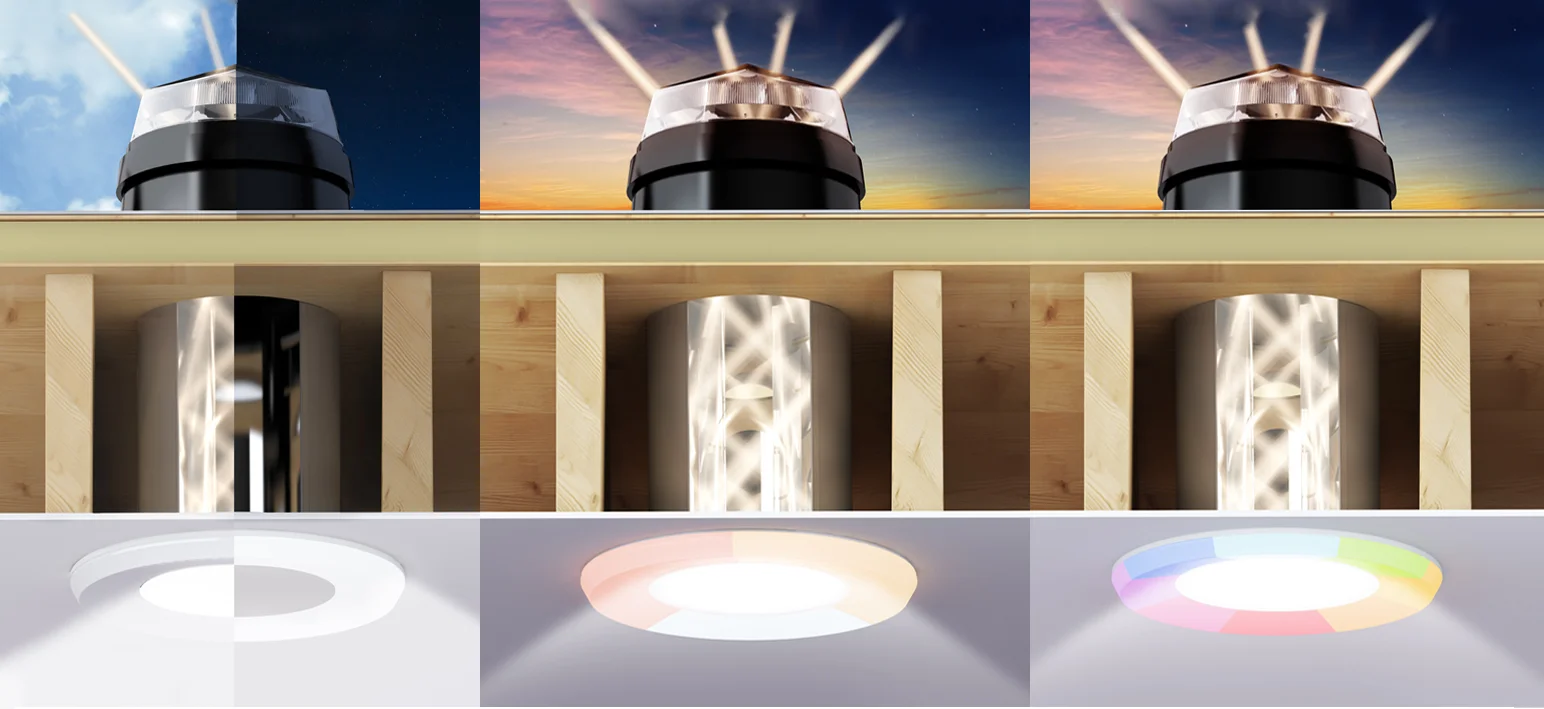Circadian lighting
Circadian lighting is a strategy that considers the circadian rhythm. Circadian lighting systems are designed to be able to control the colour and intensity of the light at particular times, with feedback from the illuminated space. For example, blue wavelengths are beneficial during daylight hours because they boost attention, reaction times and mood, but appear to be disruptive at night (www.health.harvard.edu/staying-healthy/blue-light-has-a-dark-side). So as part of a control regime, the ‘blue light’ could be controlled throughout the day to transition from a stimulating ‘biological light’(with maximum blue content) to a restful ‘biological darkness’ (with little or no blue content).
Circadian Rhythm
(Source: PhotonStar – www.photonstarlighting.co.uk)
The biological processes that regulate the sleep-wake cycle make up the human circadian system. Nearly every cell of the body has a daily rhythm and ‘clock’ controlling it. The suprachiasmatic nucleus – or pair of nuclei – (SCN) in the brain acts as the master clock, synchronising the body’s functions. It roughly follows a 24-hour pattern, and light is fundamental to driving the cycle. Cells in the eye respond to light and keep the SCN in tune with external environments. It also stops the sleep hormone melatonin being made during the day (SLL Code For Lighting, SLL CIBSE 2014).
The discovery of a novel retinal photoreceptor in the human eye and the photo pigment melanopsin has renewed the attention paid to circadian research, and has drawn substantial interest from the lighting community. The phase of the circadian rhythm can be advanced or delayed by exposure to bright light at specific times. Failure to entrain the circadian pacemaker results in sleep disorders, fatigue, performance problems, hormone and metabolic disorders.
But the circadian system is only the most well-explored of the non-visual effects of light on human physiology and, hence, on human performance. There are known to be other effects of light exposure, such as increased vitality during the day, but the mechanisms through which these effects occur are unknown (SLL Code For Lighting, SLL CIBSE 2014).
Hybrid Lighting Systems
Sunpipe LuxLoop Operation Modes: Standard - Smart - Circadian
Hybrid lighting systems combine natural daylighting systems with energy efficient and ‘intelligent’ LED lighting solutions. It is thought that hybrid lighting systems designed for circadian lighting in industrial and commercial working environments can reduce daytime artificial light by 50%. By combining natural light and artificial sources currently available – potentially applying centralised, high-efficiency light sources – energy costs for lighting could be reduced significantly. Well-designed hybrid lighting may be optimised for humans, providing effective floor, wall and ceiling illumination to reduce the ‘cave effect’ (where lighting systems focus light, resulting in some dark surfaces). They can readily meet both LG7 and UGR19 recommended guidelines for offices – the unified glare rating (UGR) expresses the chance of direct glare by a luminaire; the higher the figure, the greater the chance of glare, with UGR19 the appropriate level for an office.
Sunpipe LuxLoop by Monodraught and Photonstar
During daylight hours Sunpipe LuxLoop collects sunlight through a clear dome, directing it through a SUPER-SILVER aluminium tube and distributing it evenly through a ceiling diffuser. This is coupled with a wirelessly controlled, colour-adaptive LED lighting system by Photonstar, using an ‘intelligent’ monitoring system. The complete lighting solution can be applied to practically any location to meet required lighting performance, with the adaptive LED lamps ensuring that lighting levels, colour and quality are maintained. The system may adjust the lighting to suit circadian needs – or, indeed, any particular demands for activities (or flora and fauna) within the space. This type of hybrid system can substantially increase the real product life of the active light systems and reduce energy consumption. Compared with a totally active lighting system, there will, of course, be additional builders’ work and installation costs.
A life-cycle cost analysis should be undertaken taking proper account of potential productivity gains from increased daylight, as well as the likely maintenance costs, which are likely to be lower with hybrid systems.
Sunpipe LuxLoop has been developed to take account of real-world applications and take ‘smart lighting’ to the next level by adding circadian controls to the more traditional on-off and dimmable controls. However, when considering such applications, the designer has to ensure that they are able to satisfy the demands of circadian rhythms properly – by being able to predict the integration of active lighting and daylight – while properly assessing the life-cycle costs.



